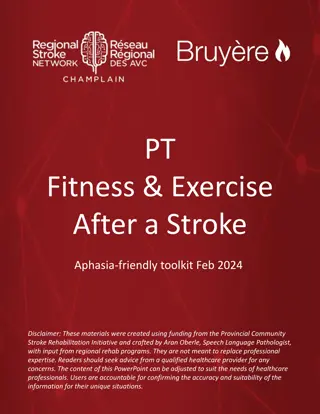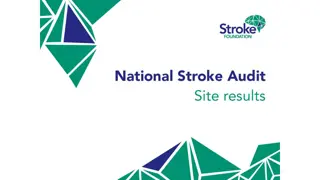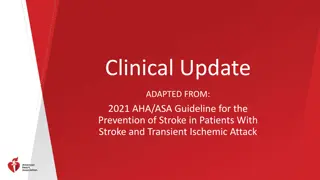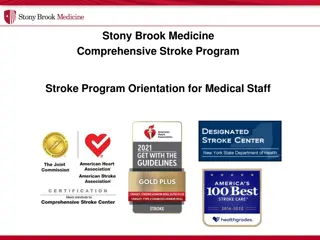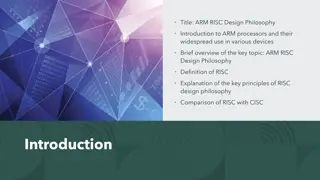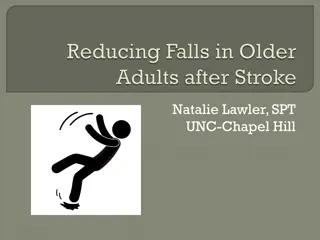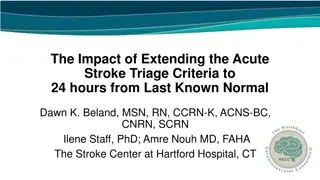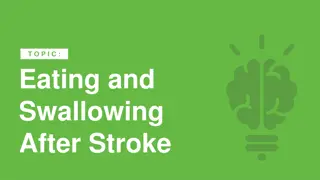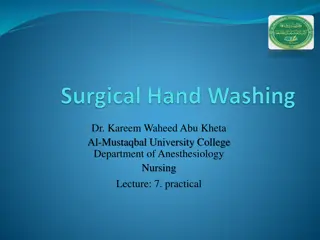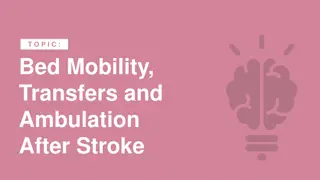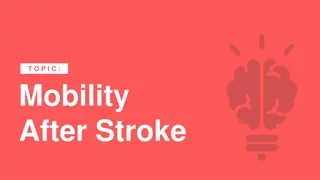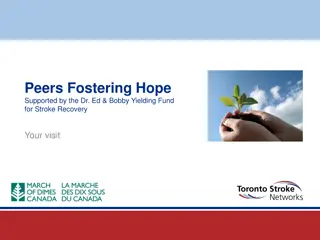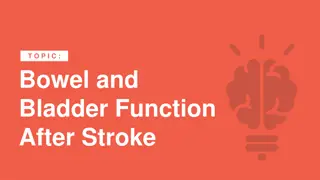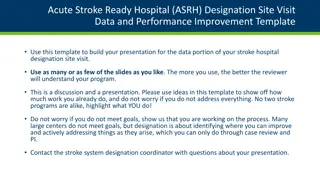Understanding the Hemiplegic Arm and Hand After Stroke
A stroke can cause weakness in the arm and hand, affecting movement and daily tasks. Careful handling reduces pain and complications. Common issues include pain, swelling, altered sensation, and muscle tone changes. Limbs may have low tone (limp) or high tone (stiff), leading to challenges in movement and care. Smart tips focus on gentle arm support and positioning.
Download Presentation

Please find below an Image/Link to download the presentation.
The content on the website is provided AS IS for your information and personal use only. It may not be sold, licensed, or shared on other websites without obtaining consent from the author. Download presentation by click this link. If you encounter any issues during the download, it is possible that the publisher has removed the file from their server.
E N D
Presentation Transcript
T O P I C : The Hemiplegic Arm and Hand After Stroke
The Hemiplegic Arm and Hand After Stroke A stroke can cause weakness (hemiplegia) on the affected side. This can impact the ability to: move the arm and hand carry out functional tasks protect the arm from injury Careful handling and care of the arm and hand can reduce pain and prevent complications. 2
The Hemiplegic Arm and Hand After Stroke What you should know: The shoulder is made up of small muscles and ligaments which support the joint >50% persons with hemiplegia will experience pain in their affected arm and/or hand Swelling in the hand is likely to develop if not well supported 3
The Hemiplegic Arm and Hand After Stroke What you should know: Pain can interfere with mood, sleep, day to day activities, and overall quality of life Altered sensation can make a person with stroke unaware of the position of their armandcan increase risk of injury The affected arm and hand can have altered muscle tone (low or high) 4
The Hemiplegic Arm and Hand After Stroke A low tone limb will feel limp and heavy. A low tone hemiplegic arm is at risk of overstretching or tearing weakened muscles. This may cause a partial dislocation (subluxation) which is not correctable. 5
The Hemiplegic Arm and Hand After Stroke A high tone limb will feel stiff and tight. It can be very difficult to move the arm or hand, and to provide care. This can contribute to: Skin breakdown (underarm, hand) Difficulty in assisting with hygiene and dressing Limited range of motion (contractures) Shoulder pain Move the limb carefully and slowly - do not force movement! 6
The Hemiplegic Arm and Hand After Stroke Smart Tips: Be gentle when moving the arm or hand. Avoid pulling on the limb Ensure the affected arm and hand are always supported. Try to: ensure the elbow and forearm are placed away from the body keep the wrist straight or slightly extended place the hand palm down with fingers open as much as possible 7
The Hemiplegic Arm and Hand After Stroke Goal: 30 degrees of wrist extension, 30 degrees of flexion through digits Consider use of splints/ rolls Careful positioning can help with reducing the high tone (spasticity), and maintain joint ROM 8
The Hemiplegic Arm and Hand After Stroke Never pull on the person s affected arm or lift from the underarm Encourage participation When using a lifting device, ensure the affected arm is positioned inside the lift sling and in front of the body Support the arm when the person is standing, transferring or ambulating Use a sling if recommended by a therapist 9
The Hemiplegic Arm and Hand After Stroke Always support the hemiplegic arm Move the arm and hand slowly and gently Monitor clenched hand for hygiene and skin health Do not raise the arm above shoulder level unless the person can do so themselves Dressing rule for stroke: hemiplegic arm should be first on; last off 10
The Hemiplegic Arm and Hand After Stroke Seek extra support All team members have a role to play in caring for the affected arm and hand Occupational Therapists and Physiotherapists are skilled in hemiplegia Smart Tips for Stroke Care (2023) was created by members of the Regional Stroke Networks of Ontario. This material may be shared without permission from the authors, without changes and with source credited. 11




